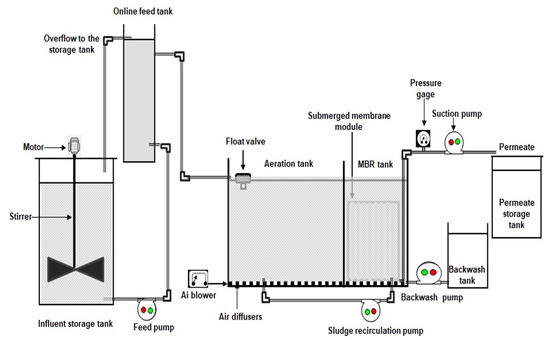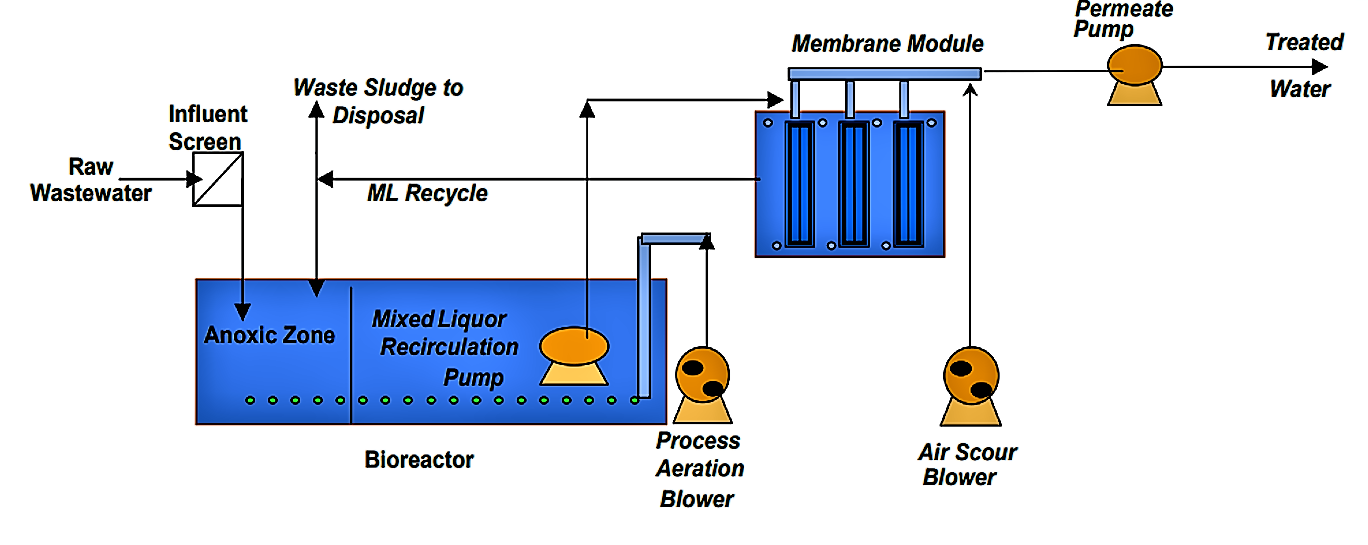How Membrane Bioreactor Contributes to the Reduction of Energy Consumption in Water Treatment
How Membrane Bioreactor Contributes to the Reduction of Energy Consumption in Water Treatment
Blog Article
Membrane Layer Bioreactors Explained: Reliable Solutions for Clean Water
Membrane bioreactors (MBRs) have emerged as a sophisticated option for attending to the pressing obstacles of wastewater therapy. By incorporating organic processes with advanced membrane layer filtration, MBRs not only boost the high quality of treated water but additionally minimize the spatial demands of treatment centers. As environmental worries heighten, the role of MBR modern technology in advertising lasting water management ends up being increasingly considerable. Nonetheless, the complexities of their operation, advantages, and potential applications warrant a closer assessment to completely recognize their effect on the future of water therapy.

What Are Membrane Layer Bioreactors?
Membrane layer bioreactors (MBRs) are innovative wastewater treatment systems that integrate biological deterioration processes with membrane filtration technology. This assimilation permits the effective removal of pollutants from water, making MBRs a recommended option in different applications, consisting of metropolitan wastewater treatment and commercial effluent monitoring.

One of the critical advantages of MBRs is their capability to produce premium effluent, frequently ideal for reuse in irrigation or industrial processes. Furthermore, MBRs call for a smaller sized footprint compared to conventional therapy systems, making them ideal for metropolitan settings where space might be restricted.
In addition, MBRs can efficiently manage varying influent lots and are much less vulnerable to the impacts of poisonous shocks. These characteristics contribute to their expanding appeal as a sustainable option for addressing the raising demand for clean water while decreasing ecological effects.
Exactly How Membrane Bioreactors Work
While the operation of membrane bioreactors (MBRs) might seem facility, it basically revolves around the synergy in between biological procedures and membrane layer filtration. MBRs incorporate a biological therapy process, typically turned on sludge, with a membrane layer separation device to treat wastewater efficiently.
In an MBR system, wastewater is very first introduced right into a bioreactor where bacteria degrade natural issue and various other pollutants. The organic activity minimizes the concentration of pollutants while promoting the growth of biomass. Following this biological treatment, the blended alcohol goes through membrane filtering, which can be microfiltration or ultrafiltration, depending on the desired effluent top quality.
The membrane layers work as a physical barrier, allowing water and tiny solutes to pass while keeping put on hold solids and bigger molecules. This makes it possible for the system to maintain a high focus of biomass within the activator, boosting the therapy performance.
In addition, the continual splitting up of cured water from the biomass helps with a compact layout and minimizes the footprint of the treatment facility. In general, the combination of biological degradation and membrane purification in MBRs causes dependable and efficient wastewater treatment, making sure high-grade effluent ideal for numerous applications.
Advantages of MBR Innovation
Among the vital benefits of membrane bioreactor (MBR) modern technology is its capability to generate high-grade effluent with a considerably decreased footprint compared to traditional wastewater treatment approaches. MBR systems effectively integrate biological therapy and membrane layer filtration, causing exceptional elimination of impurities, including put on hold solids, microorganisms, and raw material. This ability causes effluent additional reading that typically fulfills or goes beyond stringent governing requirements for reuse and discharge.
Furthermore, MBR technology enables greater biomass focus, which boosts the therapy performance and decreases the required activator volume. This small design is particularly useful in urban areas where room is limited. The operational versatility of MBR systems additionally implies they can adjust to varying influent qualities and flow rates, making them ideal for a vast array of applications.
Moreover, the minimized sludge production related to MBR processes adds to reduce operational and upkeep prices. The membrane layers work as a physical obstacle, reducing the danger of clogging and allowing longer functional periods in between cleaning. Overall, the benefits of MBR modern technology make it an attractive option for sustainable wastewater therapy, addressing both environmental concerns and the need for effective source administration.
Applications of Membrane Bioreactors
With their convenience and performance, membrane layer bioreactors (MBRs) discover applications across different sectors, including municipal wastewater therapy, industrial processes, and also water reclamation. In community settings, MBRs offer a compact solution for treating wastewater, successfully removing contaminants while simultaneously creating top notch effluent that fulfills strict regulative standards. This makes them particularly suitable for areas with limited area.
In industrial applications, MBR modern technology is used for dealing with procedure water, particularly in industries such as food and beverage, drugs, and petrochemicals. These sectors take advantage of click here for info MBRs' capacity to handle high organic loads and their effectiveness in recuperating valuable sources from wastewater, such as nutrients and water.
Furthermore, MBRs play a critical duty in water improvement initiatives, allowing the reuse of dealt with wastewater for irrigation, industrial procedures, a knockout post and even as safe and clean water after additional therapy (Membrane Bioreactor). Their efficiency in getting rid of pathogens and toxins makes them a trusted option for guaranteeing water top quality in different reuse applications
Future of Water Therapy Solutions
The future of water therapy remedies is positioned for transformative advancements driven by technical innovation and increasing environmental understanding. As international water shortage becomes a pushing concern, brand-new approaches, including membrane layer bioreactor (MBR) systems, are established to play an essential function in enhancing the effectiveness and sustainability of water treatment procedures.
Emerging innovations such as expert system and equipment understanding are expected to maximize treatment procedures, allowing for real-time tracking and anticipating upkeep. This will certainly improve the overall integrity and effectiveness of water therapy centers. Improvements in membrane materials, such as graphene and nanofiltration, assure to increase permeation prices and minimize fouling, leading to lower energy consumption and operational prices.
Furthermore, the assimilation of sustainable power resources right into water treatment plants will add to greener techniques. The round economy design will also gain traction, urging the recuperation of useful resources from wastewater, such as nutrients and energy.
Verdict

Membrane layer bioreactors (MBRs) have arised as a sophisticated remedy for dealing with the pushing difficulties of wastewater therapy. By integrating organic processes with sophisticated membrane layer filtering, MBRs not just enhance the high quality of cured water however additionally decrease the spatial demands of treatment facilities.One of the vital advantages of membrane bioreactor (MBR) modern technology is its ability to create high-quality effluent with a dramatically decreased impact contrasted to conventional wastewater treatment approaches.With their versatility and effectiveness, membrane layer bioreactors (MBRs) locate applications across different fields, including community wastewater therapy, commercial procedures, and even water reclamation.In final thought, membrane layer bioreactors represent a significant development in wastewater therapy technology, incorporating biological processes with effective membrane layer purification to generate top quality effluent.
Report this page